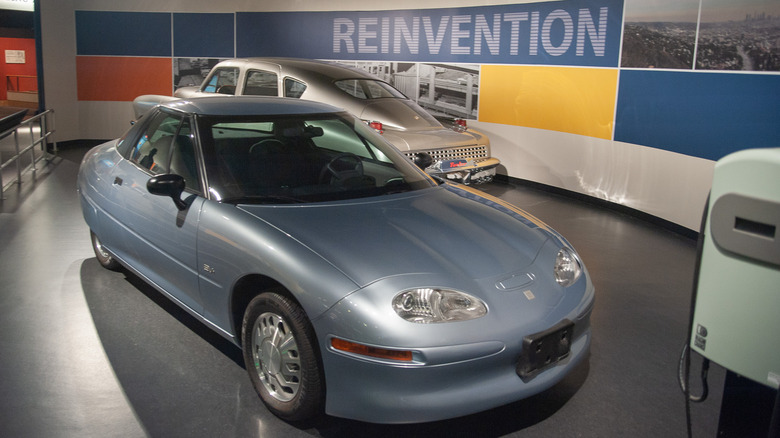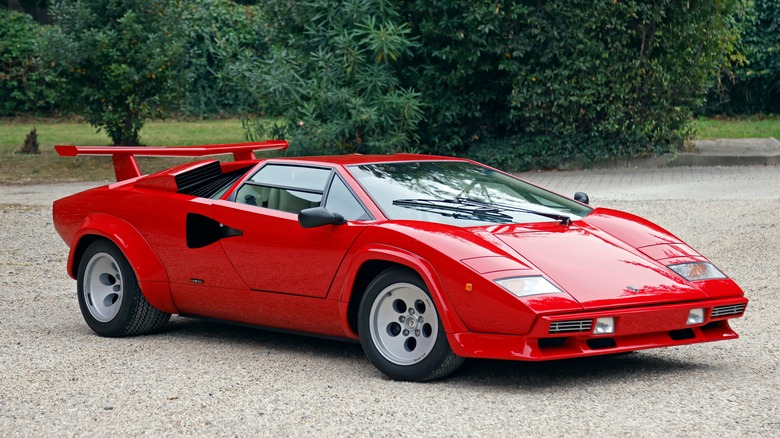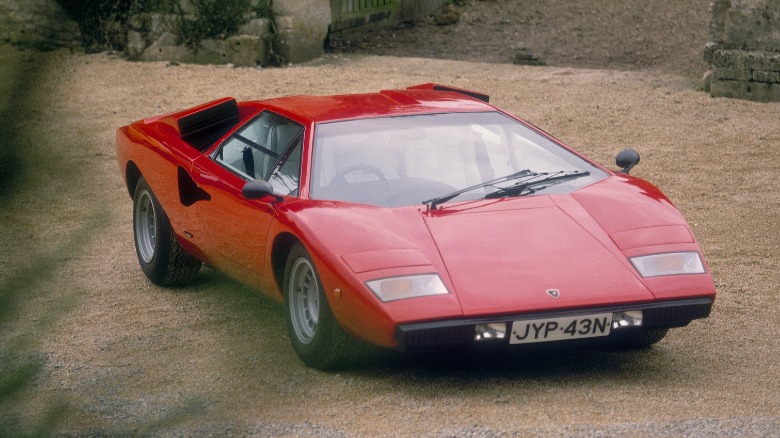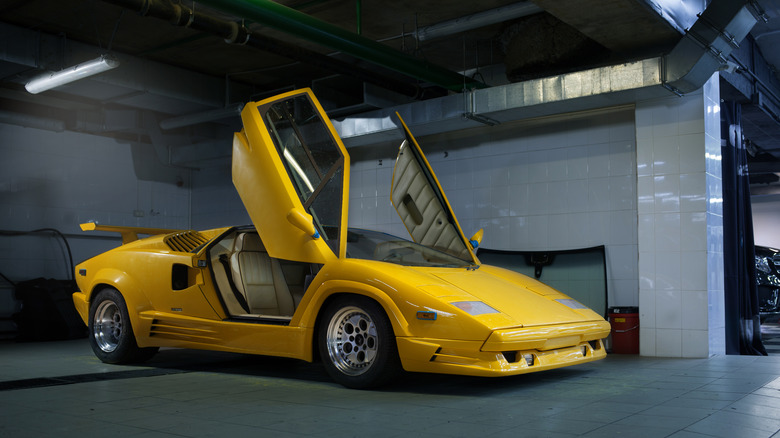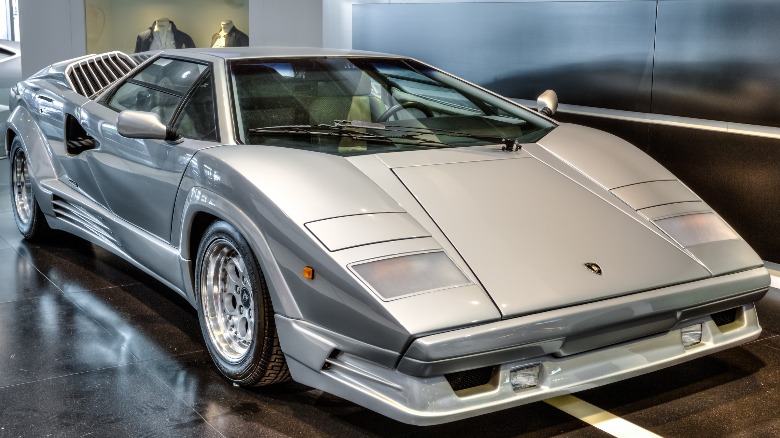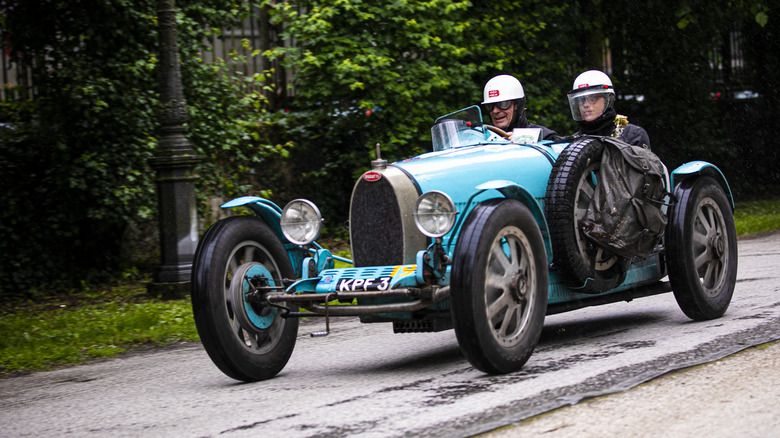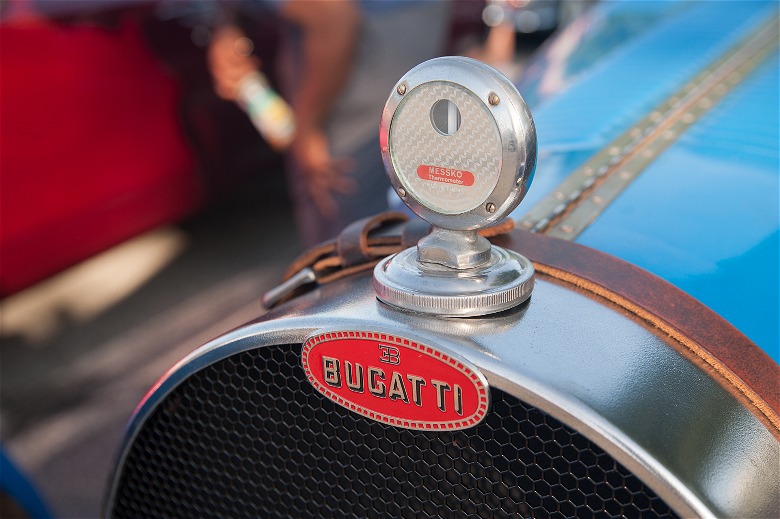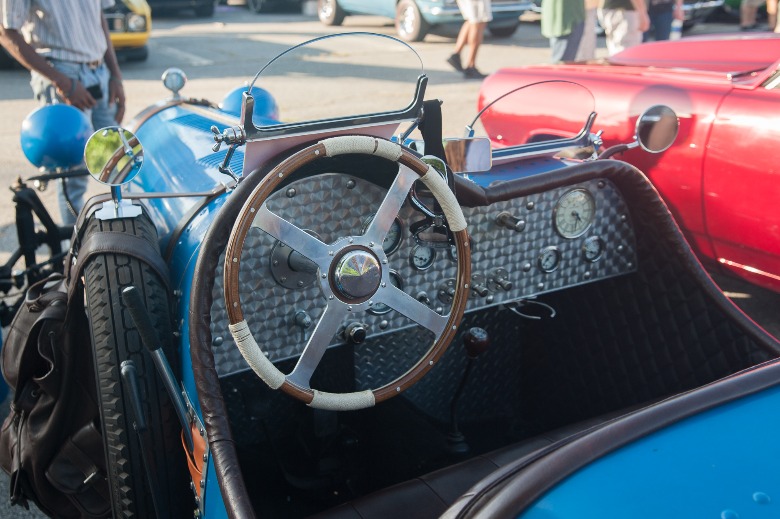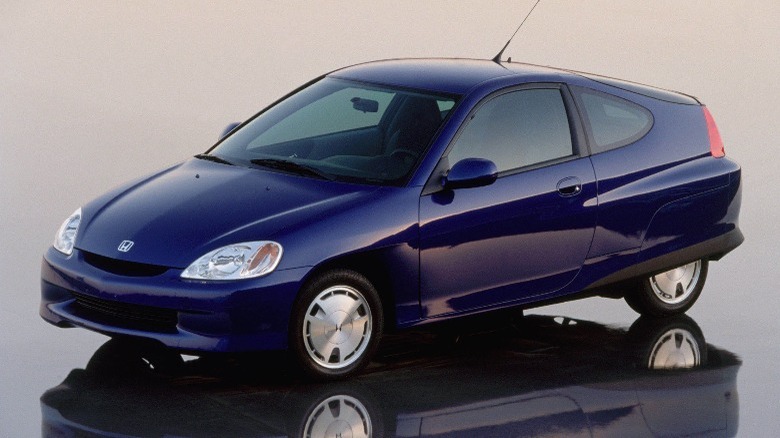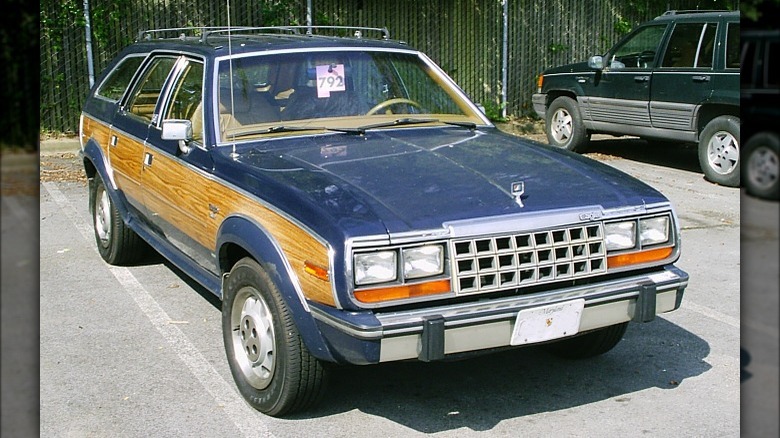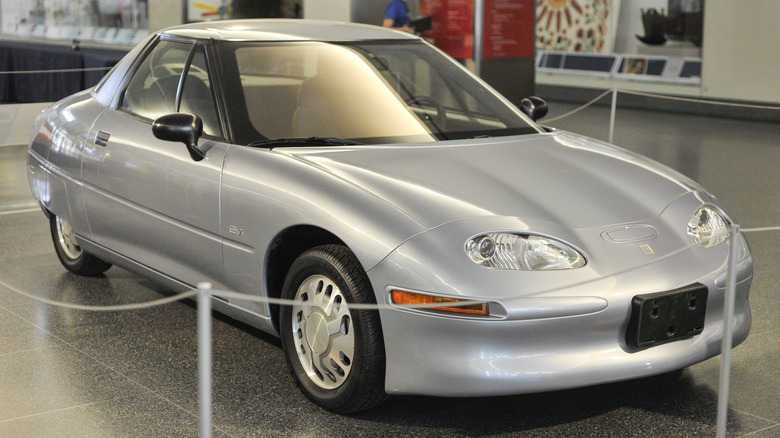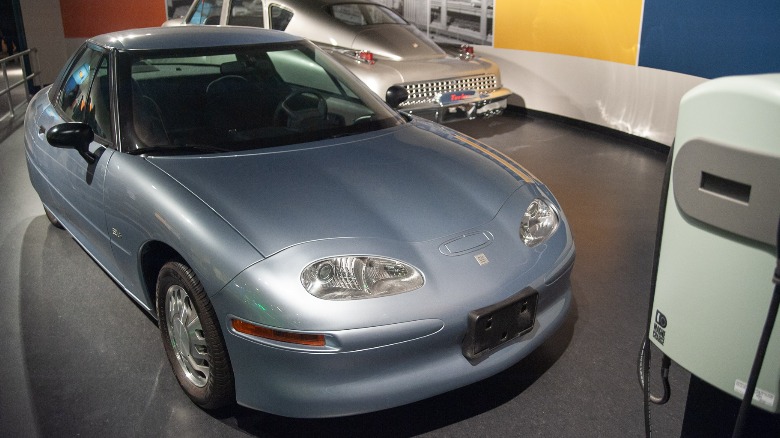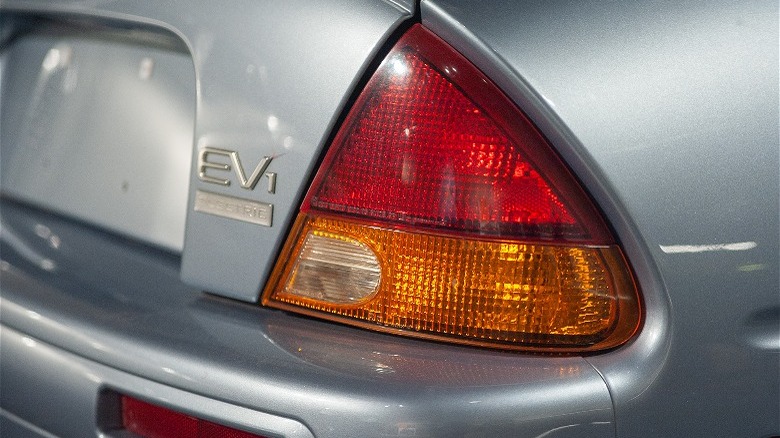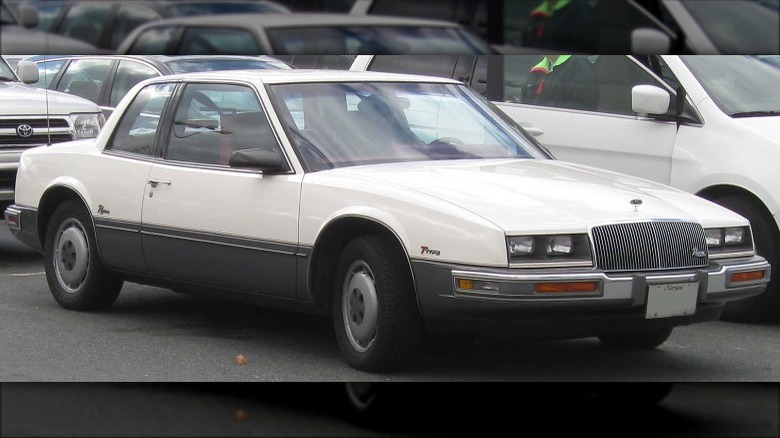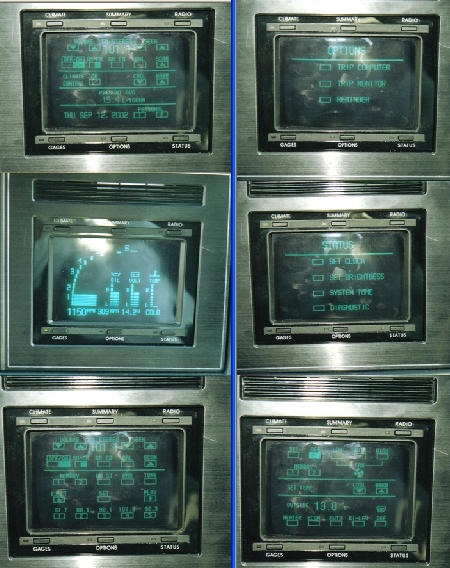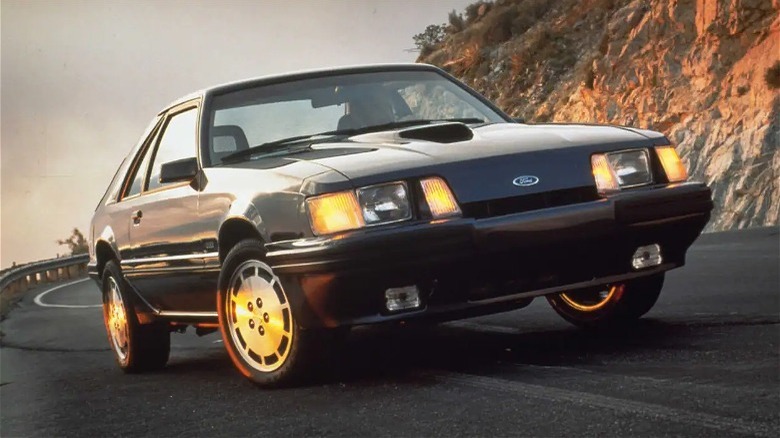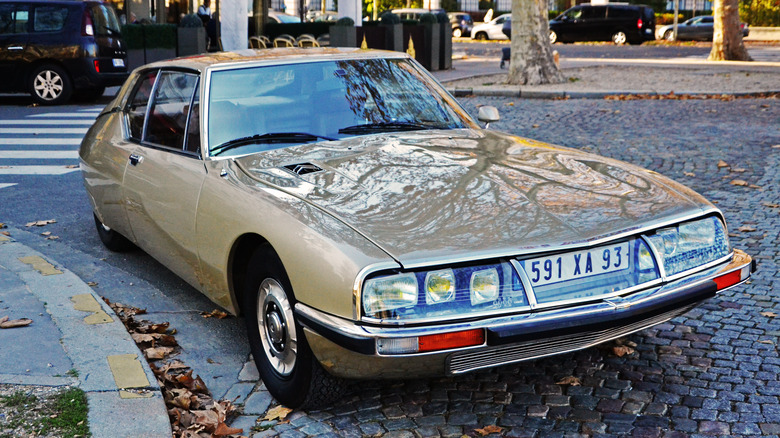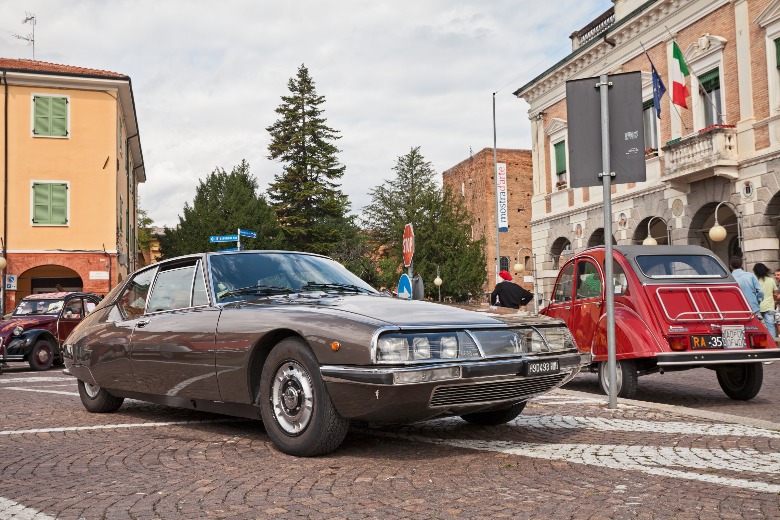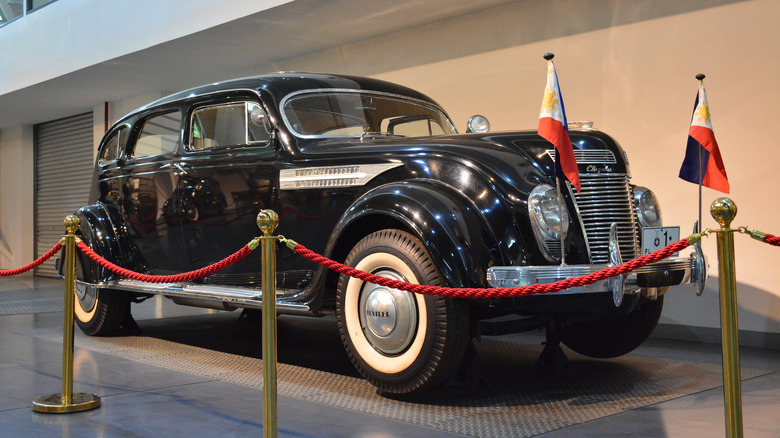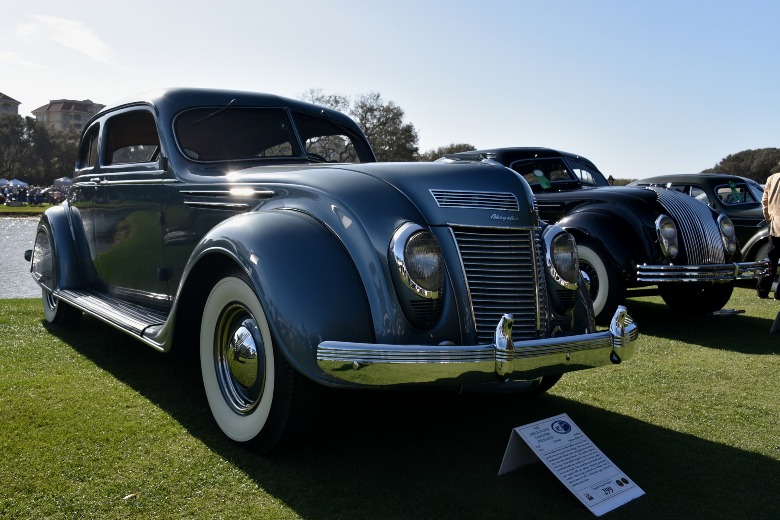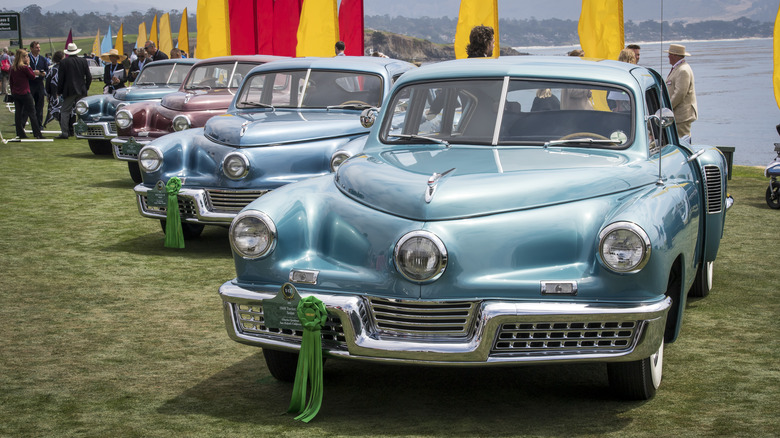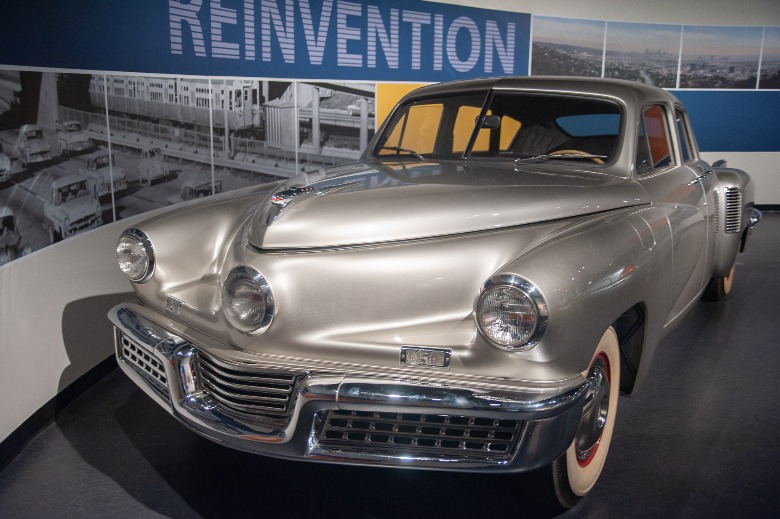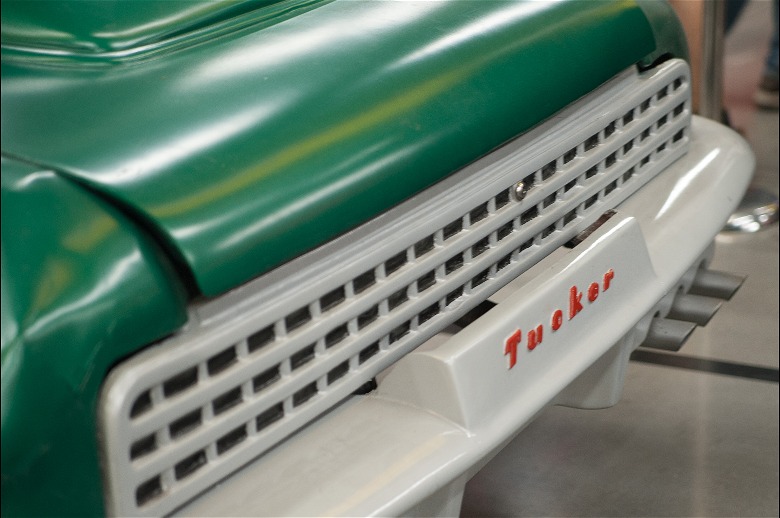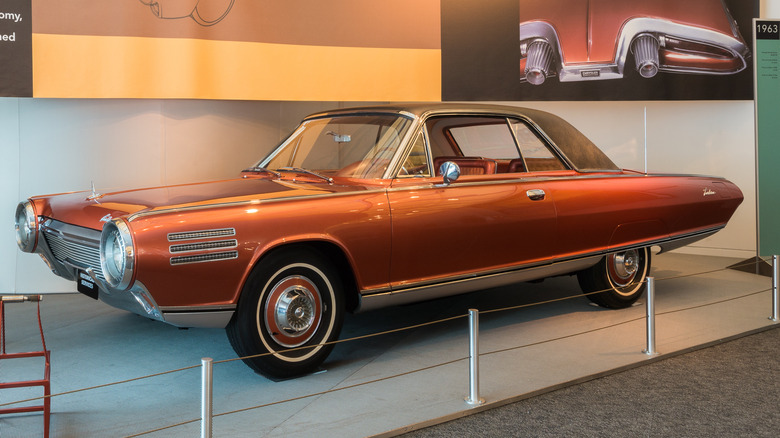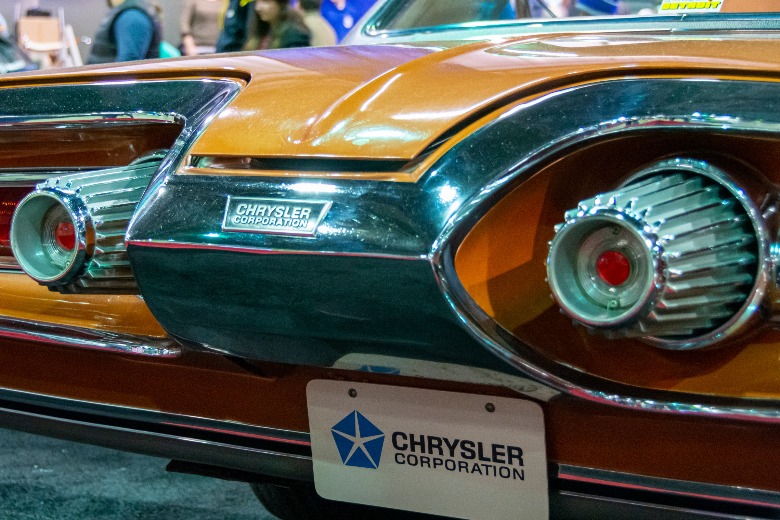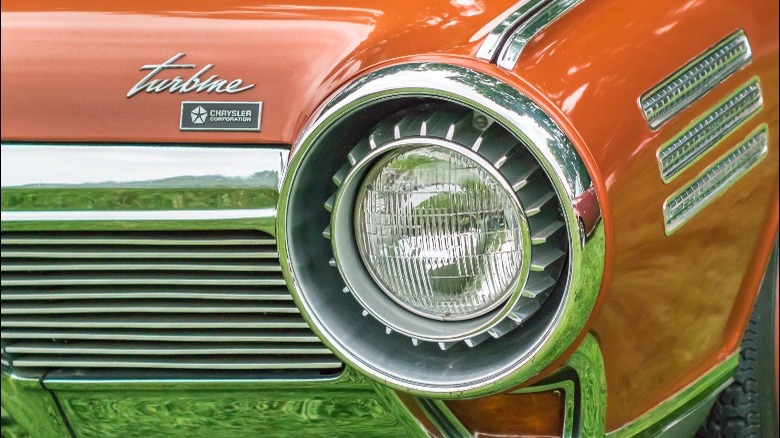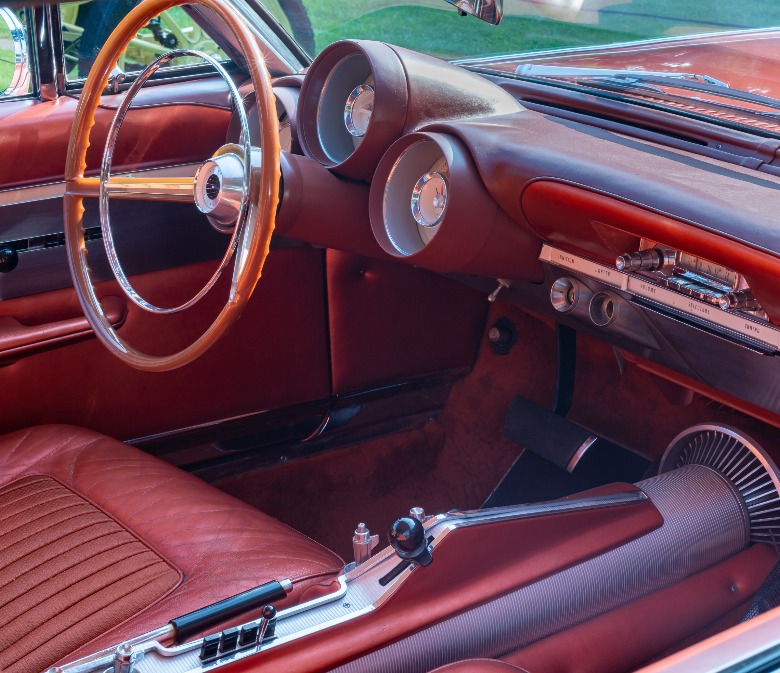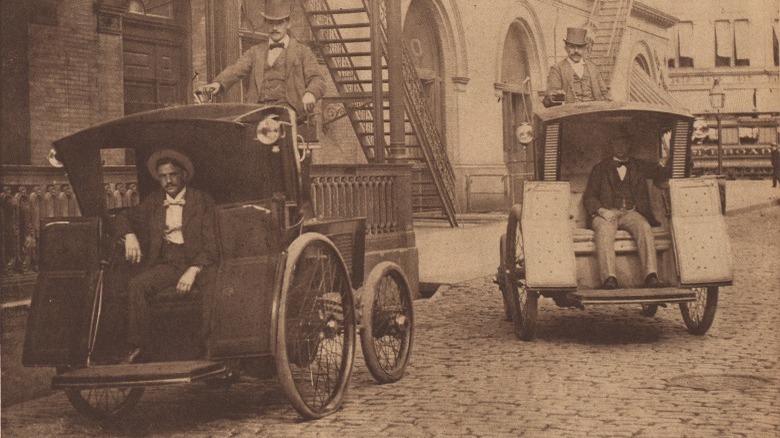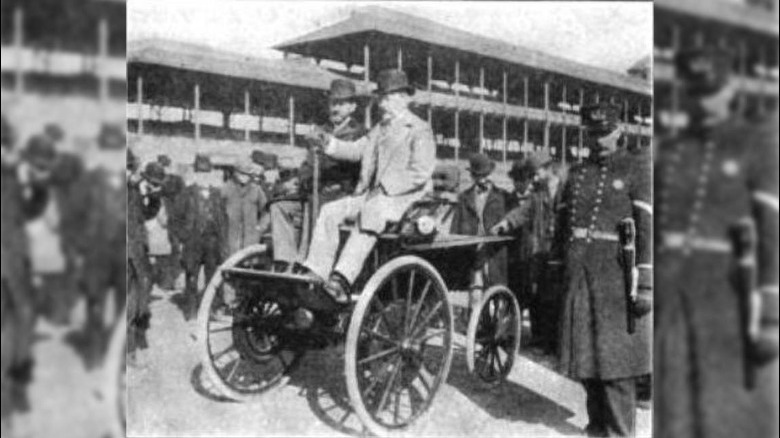12 Cars That Were Way Ahead Of Their Time
When we think of the most important cars throughout history, they're usually examples that arrived at just the right time. Cars like the Ford Model T, Volkswagen Beetle, Honda Civic, or Tesla Model S hit the market when material and cultural conditions were primed to make them commercial successes. Other cars are noteworthy for seemingly arriving too soon. They pushed the envelope of technology and styling, even if it didn't make them sales hits. Some of these vehicles were conceived as niche lifestyle products, while others hoped to gain mainstream attention.
Many innovations at the time were viewed as too outlandish, or not developed enough to be practical. Given enough time, however, their unique tech features spread out across the automotive market. These experimental vehicles led to new standards in speed, safety, and efficiency that are now taken for granted. Let's appreciate some of the greatest oddities put out by automakers over the past century.
Lamborghini Countach
In the early '70s, this space-age design wowed the automotive scene, and essentially became the blueprint for supercar engineering up to today. The prototype of the Countach was first shown in 1971, then the production model debuted in 1974 with slight cosmetic changes. It inherited the mid-mounted V12 engine from its predecessor, the Miura, but the styling was wholly original (via duPont Registry).
For sports car engineers and enthusiasts, this new wedge-shaped Countach was a revelation. After its release, rival Ferrari pivoted focus toward its own mid-engine designs, and less on its old-fashioned front-engine V12 cars. Through the following decades, everyone from BMW to Porsche, Fiat, Toyota, and Honda attempted their own midship sports car. Today, nearly every high-dollar, high-speed machine adheres to this design language, including the newest Chevy Corvette. The groundwork that Lamborghini laid down can't be understated.
The Countach was more than looks, too. The four-liter dual overhead cam V12 boasted 375 horsepower in 1974. Capable of reaching 60 miles per hour in just 5.6 seconds, with a top speed over 180 miles per hour (via Lambo Cars) — quick enough to keep up with many modern sports cars today.
The Fate of the Lamborghini Countach
The Countach had over a decade of sales, with the final version being released in 1990. Over that time, the car saw a few power increases, as well as many appearance updates.
Through the '80s, the design got much busier, with big spoilers and exaggerated fender flares getting tacked on to the bodywork. Although there's much debate about which design is more "attractive" or more "pure," the mid-1980s version of the car is probably the most recognizable one. As an actual car, the Countach was infamously derided for its awkward seating, poor visibility, and heavy clutch pedal (via Car and Driver), but sometimes, these sacrifices have to be made in the name of style!
After 1990, the mid-engine V12 layout continued through the Diablo, Murcielago, then Aventador. In 2021, Lamborghini announced that it would officially revive the Countach nameplate, with a limited edition model featuring retro-futuristic styling, and a new hybrid powertrain.
Bugatti Type 35
This prototypical supercar brought advanced technologies to the roarin' '20s, while most people were still rolling around in horseless carriages. French-Italian designer Ettore Bugatti sought success in the early days of Grand Prix racing, and the Type 35 was his ticket to success. The car snapped up over 2,000 racing victories from 1924 through 1930, including one at the newly-built Nurburgring in Germany (via Bugatti).
Power was initially supplied by a single overhead cam 2L inline eight engine, with twin carburetors, making about 95 horsepower. It was then revised a couple of years later with 2.3L of displacement and an added supercharger, making 140 horsepower. That kind of performance was nearly unheard of in the 1920s. To save weight, the wheels and bodywork were crafted from aluminum, while specially vented drum brakes improved track longevity. The two-seater, in racing trim, weighed just over 1,600 pounds and was capable of speeds over 130 miles per hour (via Motor Trend).
Only 340 Type 35s were built up to 1930, and many of them were lost to time. The original cars are exceptionally rare and expensive. Luckily, we have Argentinian company Pur Sang offering faithful, hand-built replicas of the Type 35 today (via RM Sotheby's). The Bugatti name has since been acquired by Volkswagen and stamped on flamboyant, technologically-advanced supercars like the Veyron and Chiron.
2000-2005 Honda Insight
Although the first Toyota Prius beat it to market, the Honda Insight was the first model designed from the ground up as a hybrid electric vehicle (the contemporary Prius used a modified Corolla chassis). The Insight was single-minded, with highly advanced engineering all dedicated to the pursuit of fuel efficiency.
Honda built the chassis as small and lightweight as possible, using an aluminum space frame derived from the previous NSX sports car (via Hagerty). This frame underpinned a compact three-door coupe body that weighed under 2,000 pounds. Power was supplied by a 1L three-cylinder engine conjoined with a ten kilowatt electric motor at the flywheel. Initially, a five-speed manual transmission was the only gearbox available on the Insight, but a CVT was later offered in 2001 (via Car and Driver).
Thanks to its scant weight, aerodynamic shape, and electrified power, the first Insight achieved an EPA rating of 53 miles per gallon. With light-footed driving, the car could put up even higher figures out on the highway (via NYT). There were, however, plenty of drawbacks to the design. The contemporary Prius, which hit the U.S. around the same time (via Motor Trend), offered a more practical four-door sedan layout. Its styling was also less 'out there' than the futuristic shape of the Honda, and it had an automatic transmission from its debut. The Prius quickly outsold the Insight (via Washington Post).
AMC Eagle
Nowadays, five-door crossover SUVs are commonplace. Some may even say too common. In 1980, though, the lifted station wagon design of the AMC Eagle was entirely novel. The idea was to create a large family vehicle that would have no trouble handling highways, dirt roads, and snowbanks alike.
Through most of the 20th century, four-wheel-drive systems were reserved for Jeeps and pickup trucks. Once cars like the Eagle came around, though, four-wheel drive became a desirable feature for daily drivers. It was first based on an AMC Concorde chassis, offering up coupe, sedan, and station wagon body styles (via Motor Trend). The wagon is probably the most recognizable version, but the coupe's "monster truck meets sporty" styling also makes it iconic in its own right.
The Eagle employed a selectable rear-wheel drive/four-wheel-drive transfer case, similar to what was used in AMC's own Jeep brand. This drivetrain was mated to one of two engine options. First was the 2.5L 'Iron Duke' four-cylinder sourced from General Motors. The second was a 4.2L inline-six shared with many Jeep models.
The Eagle predicted what commuter vehicles would look like in the 21st century, but it, unfortunately, didn't save AMC from looming bankruptcy. In 1987, everything left of the company was acquired by rival automaker Chrysler, mostly for the Jeep nameplate (via AutoCar). Chrysler kept the Eagle around for exactly one more year, sunsetting it after 1988 (via Autoblog).
GM EV1
The EV1 marked the first time a corporate automaker tried to market a fully electric car as a lifestyle product, albeit not too successfully. In 1997, Car and Driver called the car "The start of something big." They were right, but it would take over a decade longer for electric vehicles to really hit their stride.
GM packed a 137 horsepower motor into a lightweight coupe body, similar to the Honda Insight. This motor directly drove the front wheels, and drew power from a now-antiquated lead-acid battery pack, which could only be charged using a proprietary induction plate and power pack connected to the nose of the car.
Car and Driver's test of the EV1 showed it to be quick enough for late-'90s traffic. However, the battery would only last about 60 miles. Enough for light commuting, but this was also at a time when fast-charging infrastructure was practically nonexistent.
The Fate of the GM EV1
The method with which GM released the EV1 was anything but traditional. The only way to get one was by $399 monthly lease, and only on the west coast. Production was extremely limited, with 660 built for '97, and 457 more for '99. The '99 model also got a more advanced Nickel-metal hydride battery, improving range (via Hagerty).
After EV1 leases expired, General Motors' policy was to repossess the cars and have them unceremoniously crushed. A few examples were saved for various museums, and a few more have somehow survived the crusher's grasp and found their way into private hands (via The Drive).
The EV1's unorthodox release and short lifespan made it the subject of the 2006 documentary, "Who Killed the Electric Car?" The film posited that GM had sabotaged its own EV efforts to appease the oil industry. General Motors had however invested more than a billion dollars and nearly a decade of work into producing the EV1.
While this car wasn't much of a success, it clearly paved the way for mass-produced electric cars, like the Tesla Model S, and GM's own Bolt. For that, the EV1 should always have a place in automotive history.
1986-1990 Buick Riviera CRT
At a glance, there's absolutely nothing remarkable about this Buick. It looks just like every other front wheel drive the company put out. Look inside, however, and there's a technological quirk ripped straight from the future. This vehicle's interior console is controlled using an electronic touch screen. That's a feature considered standard in 2022, but in 1986, it was a big deal.
The touchscreen system was dubbed the "Graphical Control Center," showing off important metrics like fuel level, climate control, clock, and stereo settings — all rendered in bright neon green. The driver could change all settings with their fingertips at the screen, with an annoyingly loud beep every time a selection was made (via CarBuzz).
Since flat-panel LCDs weren't readily available in 1986, Buick had to slot a cathode ray tube monitor right into the car's dashboard. The resulting interface is much too simple and slow to respond compared to modern consoles, but the proof of concept was there decades ahead of time.
The touch screen display would also find its way into the ill-fated Reatta sports car in 1989 (via Gateway Classic Cars). The following year, both the Reatta and the Graphic Control Center were discontinued without much fanfare. If this interface instead saw some upgrades through the '90s, maybe Buick could've been a design trendsetter.
Mustang SVO
Throughout the model's history, the most desirable version of the Ford Mustang has always been the V8. Sure, there are base models with smaller four or six-cylinder engines, but they don't match the sound and performance of the V8. In 1984, the SVO tried to change that image.
Standing for the Special Vehicle Operations team that designed it, their onus was to wring muscle car power out of a tiny four-cylinder engine. The team took the Pinto-derived 2.3L engine that powered the base model Fox Mustang and added a turbocharger with an intercooler. The resulting powerplant made 175 horsepower, matching the contemporary 5.0 V8 with less than half the displacement (via Ford Performance).
The SVO also got upgraded suspension, stylized wheels, a hood vent for the intercooler, unique "aero" front fascia, and a large spoiler at the back. The five-speed manual was the only gearbox offered. The SVO would become one the rarer Mustang models, with under 10,000 sold from 1984 through 1986 (via Hemmings).
This four-cylinder could match the V8 in performance, but not in popularity. That was probably due to the fact that the SVO was actually priced more expensively than the 5.0 models. Its DNA, however, lives on in the current generation Mustang, which has had its base model V6 engine replaced by another 2.3L turbo.
Citroen SM
In 1973, the Citroen SM seemed like a page-one rewrite of the automobile. So much advanced technology was shoved into this French luxury coupe; maybe even too much. The car was based on the previous DS, but barely resembled it, as the body was reworked for slipperier aerodynamics (via Top Gear).
Most noteworthy is the SM's suspension, which featured brand new hydro-pneumatic shocks to soak up every little bump at highway speed. The system was designed to be self-leveling, keeping the same composure with one passenger, or three. The SM's wheels also mark one of the very first uses of automotive carbon fiber, saving weight over the steel alternative.
A less loved bit of technology is what can best be called the "brake button." Citroen felt the need to replace the perfectly functional pedal with what looked like a rubber puck on the floorboards. Motor Trend describes this brake button as "pressure sensitive but has almost no travel, seemingly taking your input and figuring the rest out for itself."
The SM was too weird for the general public, and an expensive failure for Citroen. It was discontinued after two short years, and under 13,000 units sold. Citroen was onto something with that suspension, though. Similar systems have made their way into many of today's luxury cars, providing premium comfort.
Chrysler Airflow
In the 1930s, it seemed like no one in the automotive industry had ever heard the words "aerodynamic" or "efficiency," but Chrysler sought to put an end to that. In 1934, they unveiled the Airflow, the first car to be designed using wind tunnel testing. It also utilized unibody chassis construction, a rarity at the time (via Hemmings).
Chrysler proved its performance bona fides at Bonneville, where the car ran over 95 miles per hour in a standing mile. Power was initially supplied by a 4.9 liter inline eight engine, making 122 horsepower. Three and four-speed transmissions were available, with coupe and sedan body styles (via How Stuff Works).
The Airflow had many of the styling trademarks of the 1930s, but stretched and pinched in various ways to eliminate drag. The public and press were initially wowed by its unique appearance, but when the time came to buy the car, business was slow. Like so many cars in this piece, the Airflow was simply too weird for its own good.
Chrysler attempted to pretty up the design in the following years, revising the grille and headlights. However, sales continued to slow, and the Airflow was canceled after the 1937 model year, with under 30,000 total sales. Chrysler would eventually be vindicated, as aerodynamic efficiency became one of the most important facets of modern auto design. In January of 2022, Chrysler also paid homage to the Airflow by putting its name on a new electric vehicle concept.
Tucker 48
The Tucker 48, also known as the Torpedo, pioneered auto safety features like seatbelts, pop-out glass, and disc brakes, with a third headlight that would swivel to follow the steering direction. It was also regarded by many as vaporware, and Preston Tucker's fledgling car company was never able to reach its full potential.
The Tucker 48 was one of the first American cars to attempt a rear-engine layout, with a massive 5.5L flat-six engine mounted behind the rear seats. These engines were salvaged from helicopters, and converted to water cooling, before being mated to a Cord select-shift transmission. With this running gear, the car was exceptionally quick for the time and capable of up to 120 miles per hour (via Hagerty).
Preston Tucker's charisma and high tech concepts easily wooed the public, but as development ran on, and money ran short, people began to question if the vehicle would be delivered. It all came to a head when the SEC attempted to sue Tucker for defrauding investors. He was able to skirt the lawsuit because he had 51 vehicles to show for his work, many of which had already been delivered to customers (via Smithsonian).
By that time, however, Tucker's company money had dried up, and his reputation was tarnished. As a result, the 51 cars by 1950 were the only examples ever built. Most of them are still accounted for, and occasionally trade hands for millions of dollars apiece.
Chrysler Turbine Car
This extremely limited production vehicle drove straight out of the year 3000 and arrived in the 1963 auto show circuit. This car was like nothing the public had seen before or has seen since. It wasn't powered by the typical internal combustion power plant, instead using a gas turbine compressor to drive the rear wheels. Mechanically, it was like a jet engine in miniature form (via Car and Driver).
Instead of using the turbine's thrust to push the car, as a full-size airliner would, the engine would spin a typical three-speed automatic gearbox and driveshaft. In that way, it drove similarly to many other cars of the time, but press and owners noted that it ran much smoother and quieter than a piston engine. The turbine spun much, much faster than anything ever put into a car, reaching speeds up to 60,000 RPM. For all those revs, the driver would have 130 horsepower, and an impressive 425 lb-ft of torque.
One of the most interesting aspects of the new engine is that it could run on many sources of fuel: regular gasoline, diesel, kerosene, vegetable oil, or alcohol. Famously, then president of Mexico, Adolfo Mateos, was lent a Turbine Car for demonstration. Mateos was able to prove the vehicle's capabilities by filling up the fuel tank with Mexican tequila and taking it for a drive (via MotorBiscuit).
The Fate of the Chrysler Turbine Car
The Turbine Car's unique coupe body was styled by Italian coachbuilder Ghia, with a futuristic, yet recognizably '60s appearance. The jetliner motif continued to the large exhaust pipes jutting out the rear haunches, as well as faux air intakes around the headlights. Even the gear shift inside mimicked an airplane throttle.
Unfortunately, poor fuel efficiency and high operating temperatures meant that the turbine engine would be deemed unfit for mass production. About 50 Turbine Cars were made in 1963 and '64, but similarly to the EV1, Chrysler repossessed and dismantled them. Nine examples are known to exist today. Three are still in the company's hands, while the other six sit in various museums and collections. One of them ended up with late-night veteran and notable car collector Jay Leno, who has produced a video demonstrating how the car works.
The turbine engine may have been abandoned, but it successfully showed off the potential of alternative fuels, including vegetable oils and ethanol derivatives. Leading into the 21st century, these alternative fuel sources have been more seriously explored in pursuit of improved efficiency and lower emissions.
Electrobat
Those who don't follow automotive history too closely may be led to believe that GM or Tesla were the first producers of fully electric cars. The fact is, electric drivetrains have been experimented with since the earliest days of the car industry (via Car and Driver). One of the first examples was the Electrobat, created way back in 1894. The completed horseless carriage seated two and weighed a massive 4,400 pounds, 1,600 of that being batteries (via The Atlantic).
An 1896 follow-up, the Electrobat II, successfully trimmed weight to about 1,800 pounds and was looking production-ready. This updated model employed two 1.1-kilowatt motors to drive the rear wheels, and had enough lead-acid batteries for 25 miles of range. The Electrobat's designers pitched their creation as a public transit option, and in 1897, they launched New York City's first motorized taxi service. By the early 1900s, they had as many as 600 Electrobats running in New York, with smaller operations in Boston and Baltimore. The Electrobat II taxis were able to extend their range, using removable batteries that could be quickly swapped out for fresh ones at cab depots.
The Fate of the Electrobat
While the taxi company appeared to be a runaway success, it was actually expanding too quickly for its own cash flow, and the whole operation collapsed under its own weight. By 1907, the Electrobat was gone. Around the same time, gasoline cars began to become the dominant form of travel. Once fuel fill-up stations were established, they proved themselves to be much more convenient than heavy and inefficient lead-acid batteries. There were plenty of other electric cars produced by small companies through the following decades, but none of them achieved as much commercial success as the gas-burners out of Detroit (via Motor Trend).
A century later, the market is absolutely flush with electric cars. Nearly every major automaker is jumping on the EV wagon. However, many issues facing them are still around. Prospective buyers might still worry about a battery's limited range or the time it takes to fully charge. Luckily, the 21st century now has technological advancements like lithium-ion batteries (via How Stuff Works) and high voltage fast chargers to help bridge that gap. Range can now be measured in hundreds of miles, and a battery can usually be charged overnight.
